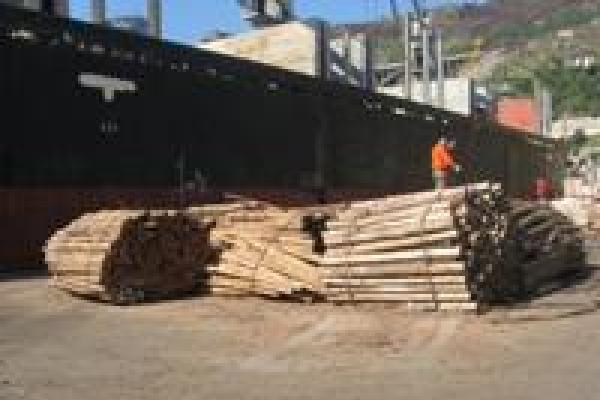
Francis Vrettos
Published: September 01, 2010

The recent decision in Onego Shipping & Chartering BV v JSC Arcadia Shipping (The “Socol 3”) [2010] EWHC 777 (Comm), in which the Club was involved for charterers, offers an interesting review of the deck carriage clause incorporated in an NYPE 1993 charter that also incorporates a paramount clause.
The SOCOL 3 was let by owners (the “respondents”) to the Club’s Member (the “appellants”) for one time charterparty trip on an amended NYPE 1993 form. While loaded with sawn timber stowed both under and on deck, the vessel encountered adverse weather off Kattegat. A part of the cargo was lost at sea and in an effort to avoid further loss, the vessel sought refuge at Halmstad for restowing and relashing the cargo that had shifted.
A dispute arose over which party would bear the shifting costs, the time lost and the eventual cargo claims. Pursuant to the charterparty the dispute was referred to arbitration in London. Owners sought to rely on Clause 13(b) of the charterparty which, they argued, was an exclusion clause and provided an indemnity “for any loss and/or damage and/or liability of whatsoever nature caused to the Vessel as a result of the carriage of deck cargo and which would not have arisen had deck cargo not been loaded”. The contract also included a typical Clause Paramount.
The tribunal found that one of the causes of the loss was the vessel’s instability as a consequence of loading a fourth tier of timber and that because the stability of the ship was within the chief officer's knowledge the owners were liable for the loss of cargo. However, the arbitrators concluded Clause 13 (b) protected owners when the incident would not have happened but for the deck carriage and, because the bills of lading were correctly claused to reflect the carriage on deck, dismissed the charterers' argument that the Hague-Visby Rules applied to deck cargo when incorporated into a charter by the Clause Paramount.
Charterers appealed to the High Court on the basis that the tribunal was wrong in finding that the Hague-Visby Rules did not, in these circumstances, apply to deck carriage and, all importantly, that Clause 13(b) should not, and was not, intended to, cover or include Master's negligence. To find otherwise, they argued, would expose charterers to a multitude of risks which they would not otherwise assume in the carriage of deck cargo.
The two questions before the court were:
1. Where a charterparty incorporates the Hague-Visby Rules and envisages deck cargo carriage, do the Rules apply to the carriage of deck cargo or is their application excluded by virtue of Article 1(c) Hague-Visby Rules (the “Rules”) .
2. In respect of what liabilities does Clause 13(b) provide an indemnity? In particular, does it afford owners an indemnity even in respect of liabilities caused by negligence on the part of owners or their servants?
On question 1, charterers sought to argue that when the Rules were contractually incorporated into the charterparty the rules of construction meant references to "bill of lading" in the Rules should be read as "charterparty" and, where the charterparty (being for all purposes "the contract of carriage"), did not bear an on-deck statement, as required for Article 1(c), the Rules applied to the carriage. The Rules apply to the carriage of goods by sea and Article 1(c) provides:
“ "Goods” includes goods, wares, merchandise, and articles of every kind whatsoever except live animals and cargo which by the contract of carriage is stated as being carried on deck and is so carried.” (emphasis provided.)
Owners relied on The “Adamastos” (HL) [1958] 1 Lloyd’s Rep 73, arguing that the intention of a paramount clause was simply that the liability regime that applied to the bills of lading (that were claused to reflect the on-deck carriage) also applied to the charterparty. Thus, the logical conclusion was that by virtue of Art 1(c) the Rules did not apply under the charter so far as the deck carriage.
The judge agreed with the tribunal’s conclusion that the Rules did not apply to the carriage of the deck cargo as between owners and charterers. The rules of construction in respect of incorporation, he said, were not for rigid and mechanical application but, instead, logic should be exercised to find which words of the incorporated text should be altered to result in a sound meaning. Clearly, the time charter (which was concluded before it was even known what cargo would be carried on deck) could never include an on-deck statement. Rather than accepting the impasse, the judge considered that in the context of Art 1(c) the words "contract of carriage" therefore meant the "bill of lading" and not the "charterparty".
On question 2, charterers' argued that clause 13(b) of the charterparty, the “exception/ indemnity” clause, should not be read to include owners'/ their servants' negligence. The words of the clause were not unequivocal enough expressly to exempt owners from their own negligence. Owners argued that the words "and/or liability of whatsoever nature" were wide enough to include the Master's negligence and unseaworthiness.
Hamblen J had little difficulty agreeing with charterers that Clause 13(b) should be construed so as not to cover owners’ negligence or unseaworthiness. He referred to the test laid down in Canada Steamship [1952] 1 Lloyd’s Rep 1 according to which exclusion clauses do not, absent express reference, encompass a party’s negligence (with any ambiguity resolved against the party seeking to rely on any such exclusion clause).
Moreover, and notwithstanding the construction point, if the exception/ indemnity was to operate in owner’s favour, the carriage of deck cargo had to be an effective cause of the loss (rather than merely satisfying the "but for" test).
While the insight offered by this case on the scope and effect of exception clauses is perhaps not new, the dispute did deal with a novel point concerning the operation of a Clause Paramount incorporated into a charterparty in circumstances involving deck carriage and is a warning to charterers and owners alike not to rely on the Paramount Clause to address potentail liabilties flowing from the carriage of deck cargo under the charter.
Article by Francis Vrettos


